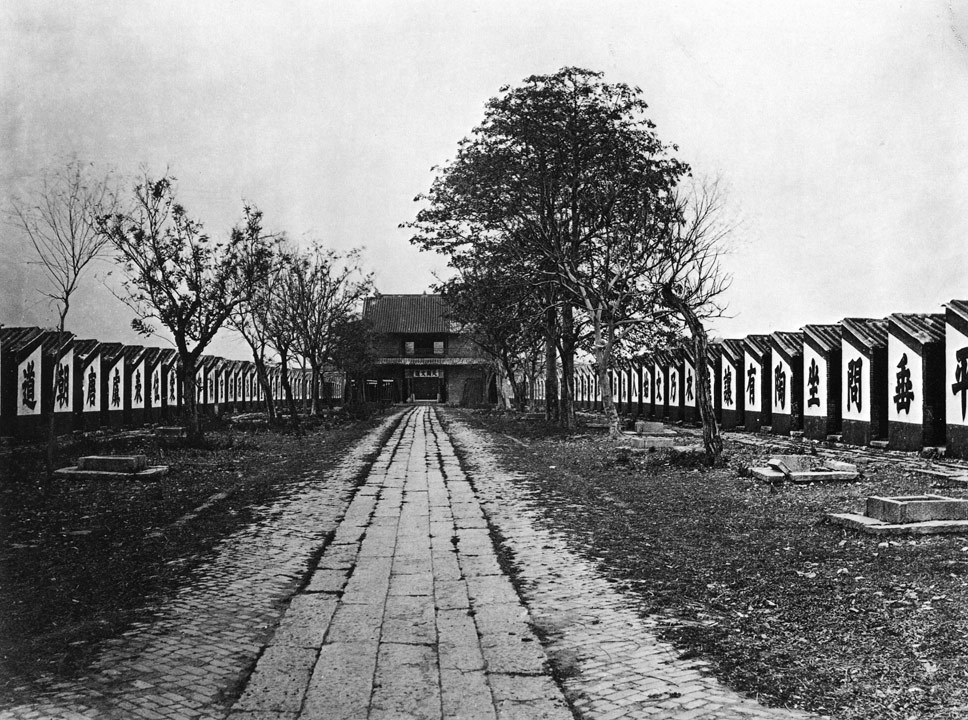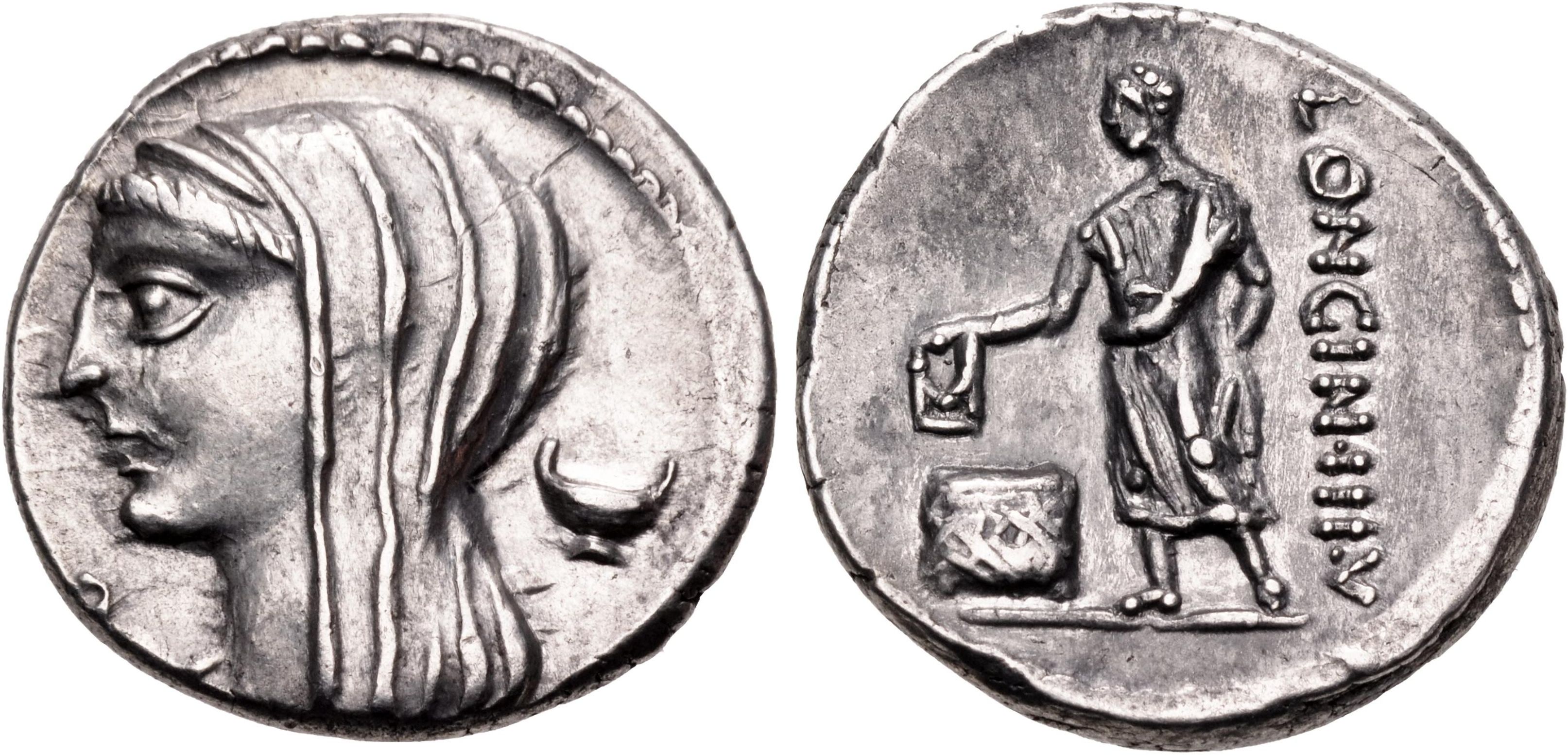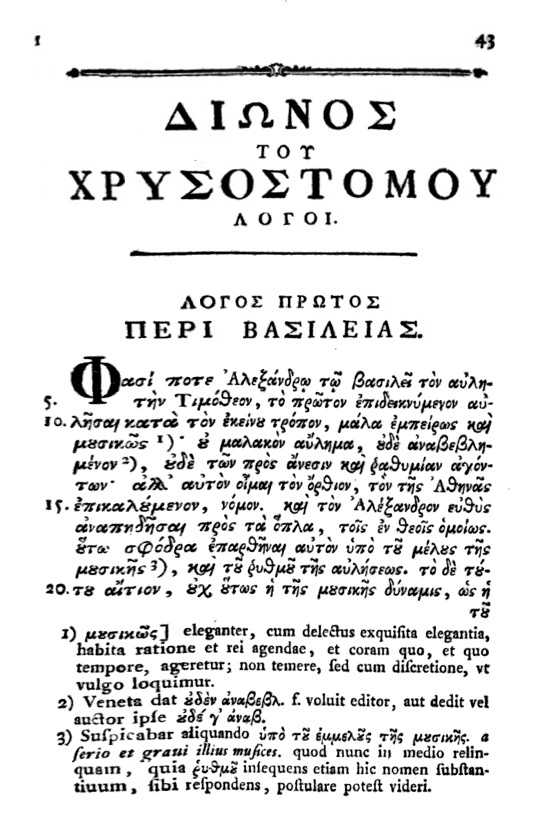|
Cassius Dio
Lucius Cassius Dio (), also known as Dio Cassius ( ), was a Roman historian and senator of maternal Greek origin. He published 80 volumes of the history on ancient Rome, beginning with the arrival of Aeneas in Italy. The volumes documented the subsequent founding of Rome (753 BC), the formation of the Republic (509 BC), and the creation of the Empire (27 BC), up until 229 AD. Written in Ancient Greek over 22 years, Dio's work covers approximately 1,000 years of history. Many of his 80 books have survived intact, or as fragments, providing modern scholars with a detailed perspective on Roman history. Biography Lucius Cassius Dio was the son of Cassius Apronianus, a Roman senator and member of the gens Cassia, who was born and raised at Nicaea in Bithynia. Byzantine tradition maintains that Dio's mother was the daughter or sister of the Greek orator and philosopher, Dio Chrysostom; however, this relationship has been disputed. Although Dio was a Roman citizen, he wrote in Gree ... [...More Info...] [...Related Items...] OR: [Wikipedia] [Google] [Baidu] |
Commodus
Commodus (; 31 August 161 – 31 December 192) was a Roman emperor who ruled from 177 to 192. He served jointly with his father Marcus Aurelius from 176 until the latter's death in 180, and thereafter he reigned alone until his assassination. His reign is commonly thought of as marking the end of a golden period of peace in the history of the Roman Empire, known as the Pax Romana. Commodus accompanied his father during the Marcomannic Wars in 172, and on a tour of the Eastern provinces in 176. Later that year he became the youngest emperor and consul up to that point, at the age of 15. During his solo reign, the Roman Empire enjoyed reduced military conflict compared with the reign of Marcus Aurelius. Intrigues and conspiracies abounded, leading Commodus to revert to an increasingly dictatorial style of leadership, culminating in his creating a deific personality cult, with his performing as a gladiator in the Colosseum. Throughout his reign, Commodus entrusted the management ... [...More Info...] [...Related Items...] OR: [Wikipedia] [Google] [Baidu] |
History Of The Roman Empire
The history of the Roman Empire covers the history of ancient Rome from the fall of the Roman Republic in 27 BC until the abdication of Romulus Augustulus in AD 476 in the West, and the Fall of Constantinople in the East in AD 1453. Ancient Rome became a territorial empire while still a republic, but was then ruled by Roman emperors beginning with Augustus (), becoming the Roman Empire following the death of the last republican dictator, the first emperor's adoptive father Julius Caesar. Rome had begun expanding shortly after the founding of the Roman Republic in the 6th century BC, though it did not expand outside the Italian Peninsula until the 3rd century BC. Civil war engulfed the Roman state in the mid 1st century BC, first between Julius Caesar and Pompey, and finally between Octavian and Mark Antony. Antony was defeated at the Battle of Actium in 31 BC. In 27 BC, the Senate made Octavian ''imperator'' ("commander") thus beginning the Principate, the first epoch of Roman ... [...More Info...] [...Related Items...] OR: [Wikipedia] [Google] [Baidu] |
Roman Empire
The Roman Empire ( la, Imperium Romanum ; grc-gre, Βασιλεία τῶν Ῥωμαίων, Basileía tôn Rhōmaíōn) was the post-Republican period of ancient Rome. As a polity, it included large territorial holdings around the Mediterranean Sea in Europe, North Africa, and Western Asia, and was ruled by emperors. From the accession of Caesar Augustus as the first Roman emperor to the military anarchy of the 3rd century, it was a Principate with Italia as the metropole of its provinces and the city of Rome as its sole capital. The Empire was later ruled by multiple emperors who shared control over the Western Roman Empire and the Eastern Roman Empire. The city of Rome remained the nominal capital of both parts until AD 476 when the imperial insignia were sent to Constantinople following the capture of the Western capital of Ravenna by the Germanic barbarians. The adoption of Christianity as the state church of the Roman Empire in AD 380 and the fall of the Western ... [...More Info...] [...Related Items...] OR: [Wikipedia] [Google] [Baidu] |
Roman Republic
The Roman Republic ( la, Res publica Romana ) was a form of government of Rome and the era of the classical Roman civilization when it was run through public representation of the Roman people. Beginning with the overthrow of the Roman Kingdom (traditionally dated to 509 BC) and ending in 27 BC with the establishment of the Roman Empire, Rome's control rapidly expanded during this period—from the city's immediate surroundings to hegemony over the entire Mediterranean world. Roman society under the Republic was primarily a cultural mix of Latin and Etruscan societies, as well as of Sabine, Oscan, and Greek cultural elements, which is especially visible in the Roman Pantheon. Its political organization developed, at around the same time as direct democracy in Ancient Greece, with collective and annual magistracies, overseen by a senate. The top magistrates were the two consuls, who had an extensive range of executive, legislative, judicial, military, and religious powers ... [...More Info...] [...Related Items...] OR: [Wikipedia] [Google] [Baidu] |
:Template:Infobox Writer/doc
Infobox writer may be used to summarize information about a person who is a writer/author (includes screenwriters). If the writer-specific fields here are not needed, consider using the more general ; other infoboxes there can be found in :People and person infobox templates. This template may also be used as a module (or sub-template) of ; see WikiProject Infoboxes/embed for guidance on such usage. Syntax The infobox may be added by pasting the template as shown below into an article. All fields are optional. Any unused parameter names can be left blank or omitted. Parameters Please remove any parameters from an article's infobox that are unlikely to be used. All parameters are optional. Unless otherwise specified, if a parameter has multiple values, they should be comma-separated using the template: : which produces: : , language= If any of the individual values contain commas already, add to use semi-colons as separators: : which produces: : , ps ... [...More Info...] [...Related Items...] OR: [Wikipedia] [Google] [Baidu] |
Aeneas
In Greco-Roman mythology, Aeneas (, ; from ) was a Trojan hero, the son of the Trojan prince Anchises and the Greek goddess Aphrodite (equivalent to the Roman Venus). His father was a first cousin of King Priam of Troy (both being grandsons of Ilus, founder of Troy), making Aeneas a second cousin to Priam's children (such as Hector and Paris). He is a minor character in Greek mythology and is mentioned in Homer's ''Iliad''. Aeneas receives full treatment in Roman mythology, most extensively in Virgil's ''Aeneid'', where he is cast as an ancestor of Romulus and Remus. He became the first true hero of Rome. Snorri Sturluson identifies him with the Norse god Vidarr of the Æsir.The Prose Edda of Snorri Sturlson Translated by Arthur Gilchrist Brodeur 916Prologue II at Internet Sacred Texts Archive. Accessed 11/14/17 Etymology Aeneas is the Romanization of the hero's original Greek name (''Aineías''). Aineías is first introduced in the ''Homeric Hymn to Aphrodite'' when ... [...More Info...] [...Related Items...] OR: [Wikipedia] [Google] [Baidu] |
Public Servant
The civil service is a collective term for a sector of government composed mainly of career civil servants hired on professional merit rather than appointed or elected, whose institutional tenure typically survives transitions of political leadership. A civil servant, also known as a public servant, is a person employed in the public sector by a government department or agency for public sector undertakings. Civil servants work for central and state governments, and answer to the government, not a political party. The extent of civil servants of a state as part of the "civil service" varies from country to country. In the United Kingdom (UK), for instance, only Crown (national government) employees are referred to as "civil servants" whereas employees of local authorities (counties, cities and similar administrations) are generally referred to as "local government civil service officers", who are considered public servants but not civil servants. Thus, in the UK, a civil servant is ... [...More Info...] [...Related Items...] OR: [Wikipedia] [Google] [Baidu] |
Roman Citizen
Citizenship in ancient Rome (Latin: ''civitas'') was a privileged political and legal status afforded to free individuals with respect to laws, property, and governance. Citizenship in Ancient Rome was complex and based upon many different laws, traditions, and cultural practices. There existed several different types of citizenship, determined by one's gender, class, and political affiliations, and the exact duties or expectations of a citizen varied throughout the history of the Roman Empire. History The oldest document currently available that details the rights of citizenship is the Twelve Tables, ratified c. 449 BC. Much of the text of the Tables only exists in fragments, but during the time of Ancient Rome the Tables would be displayed in full in the Roman Forum for all to see. The Tables detail the rights of citizens in dealing with court proceedings, property, inheritance, death, and (in the case of women) public behavior. Under the Roman Republic, the government conducte ... [...More Info...] [...Related Items...] OR: [Wikipedia] [Google] [Baidu] |
Byzantine Greeks
The Byzantine Greeks were the Greek-speaking Eastern Romans of Orthodox Christianity throughout Late Antiquity and the Middle Ages. They were the main inhabitants of the lands of the Byzantine Empire (Eastern Roman Empire), of Constantinople and Asia Minor (modern Turkey), the Greek islands, Cyprus, and portions of the southern Balkans, and formed large minorities, or pluralities, in the coastal urban centres of the Levant and northern Egypt. Throughout their history, the Byzantine Greeks self-identified as ''Romans'' ( gr, Ῥωμαῖοι, Rhōmaîoi), but are referred to as "Byzantine Greeks" in modern historiography. Latin speakers identified them simply as Greeks or with the term Romei. The social structure of the Byzantine Greeks was primarily supported by a rural, agrarian base that consisted of the peasantry, and a small fraction of the poor. These peasants lived within three kinds of settlements: the ''chorion'' or village, the ''agridion'' or hamlet, and the ''proast ... [...More Info...] [...Related Items...] OR: [Wikipedia] [Google] [Baidu] |
Gens Cassia
The gens Cassia was a Roman family of great antiquity. The earliest members of this gens appearing in history may have been patrician, but all those appearing in later times were plebeians. The first of the Cassii to obtain the consulship was Spurius Cassius Vecellinus, in 502 BC. He proposed the first agrarian law, for which he was charged with aspiring to make himself king, and put to death by the patrician nobility. The Cassii were amongst the most prominent families of the later Republic, and they frequently held high office, lasting well into imperial times. Among their namesakes are the Via Cassia, the road to Arretium, and the village of Cassianum Hirpinum, originally an estate belonging to one of this family in the country of the Hirpini.''Dictionary of Greek and Roman Biography and Mythology'', vol. I, pp. 621, 622 ("Cassia Gens"). Their most famous member is Gaius Cassius Longinus, an assassin of Julius Caesar alongside Brutus. Origin A possible clue to the origi ... [...More Info...] [...Related Items...] OR: [Wikipedia] [Google] [Baidu] |
Dio Chrysostom
Dio Chrysostom (; el, Δίων Χρυσόστομος ''Dion Chrysostomos''), Dion of Prusa or Cocceianus Dio (c. 40 – c. 115 AD), was a Greek orator, writer, philosopher and historian of the Roman Empire in the 1st century AD. Eighty of his ''Discourses'' (or ''Orations''; ) are extant, as well as a few Letters and a mock essay "In Praise of Hair", as well as a few other fragments. His sobriquet ''Chrysostom'' comes from the Greek (), which literally means "golden-mouthed". Life He was born at Prusa (now Bursa), in the Roman province of Bithynia (now part of northwestern Turkey). His father, Pasicrates, seems to have bestowed great care on his son Dio's education. At first he lived in Prusa, where he held important offices, composed speeches and other rhetorical and sophistical essays, and studied philosophy. The Stoic and Platonist philosophies, however, appear to have had the greatest charms for him, particularly the stoicism of Musonius Rufus. He went to Rome during Ve ... [...More Info...] [...Related Items...] OR: [Wikipedia] [Google] [Baidu] |
Cognomen
A ''cognomen'' (; plural ''cognomina''; from ''con-'' "together with" and ''(g)nomen'' "name") was the third name of a citizen of ancient Rome, under Roman naming conventions. Initially, it was a nickname, but lost that purpose when it became hereditary. Hereditary ''cognomina'' were used to augment the second name, the ''nomen gentilicium'' (the family name, or clan name), in order to identify a particular branch within a family or family within a clan. The term has also taken on other contemporary meanings. Roman names Because of the limited nature of the Latin '' praenomen'', the ''cognomen'' developed to distinguish branches of the family from one another, and occasionally, to highlight an individual's achievement, typically in warfare. One example of this is Gnaeus Pompeius Magnus, whose cognomen ''Magnus'' was earned after his military victories under Sulla's dictatorship. The ''cognomen'' was a form of distinguishing people who accomplished important feats, and those who ... [...More Info...] [...Related Items...] OR: [Wikipedia] [Google] [Baidu] |








